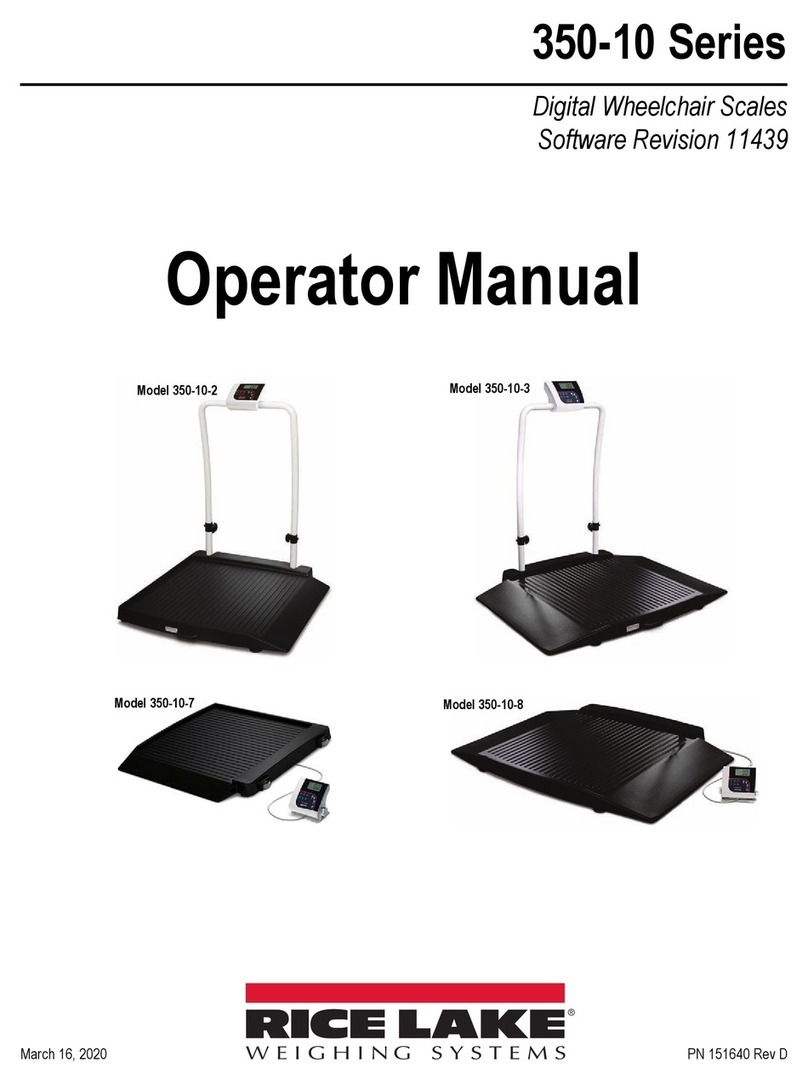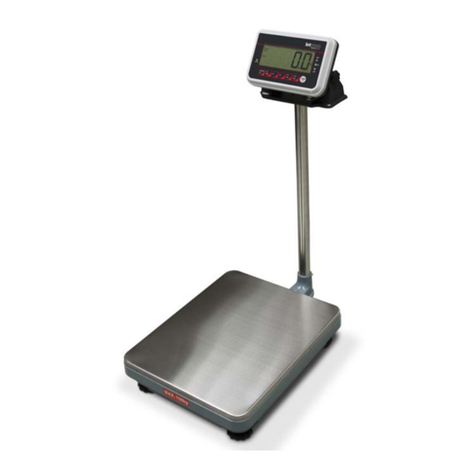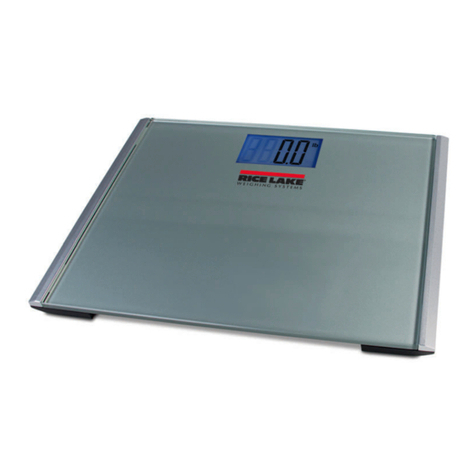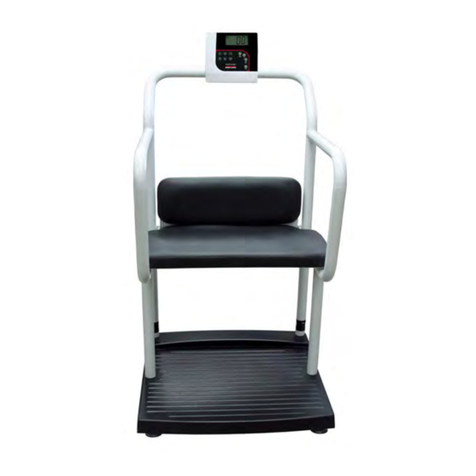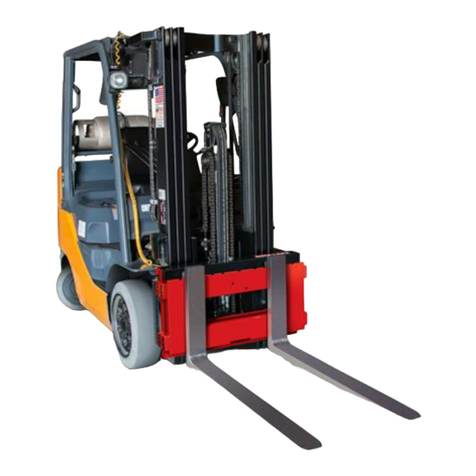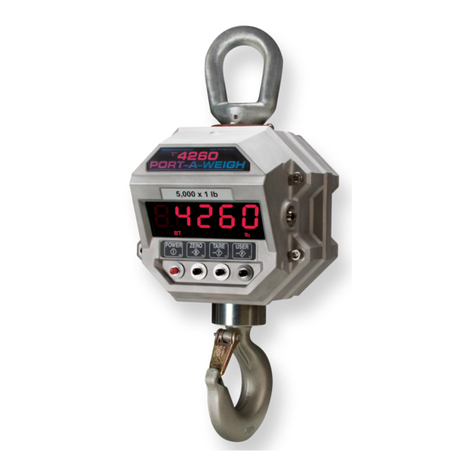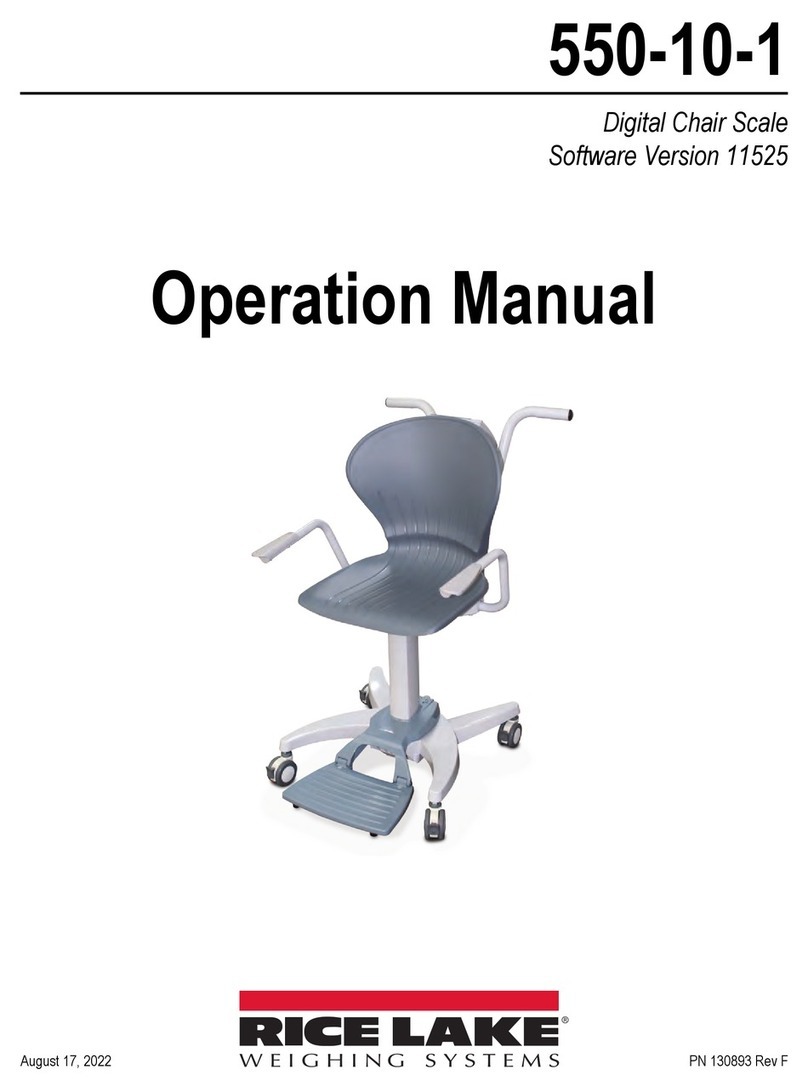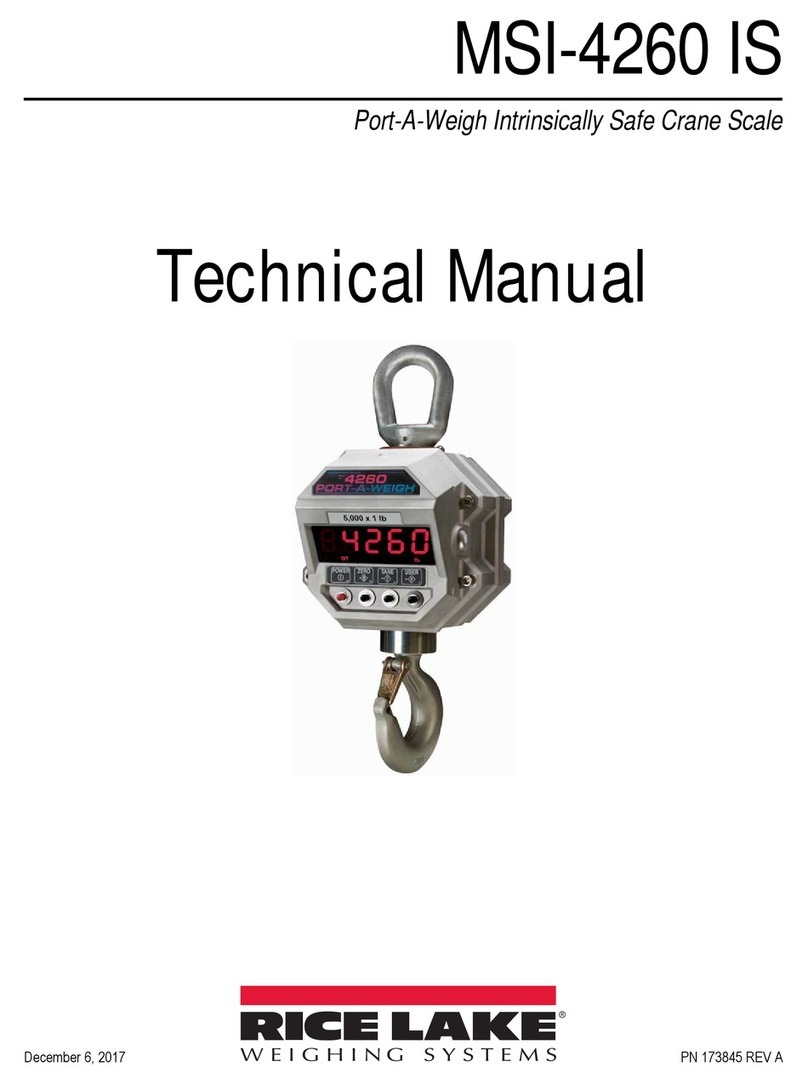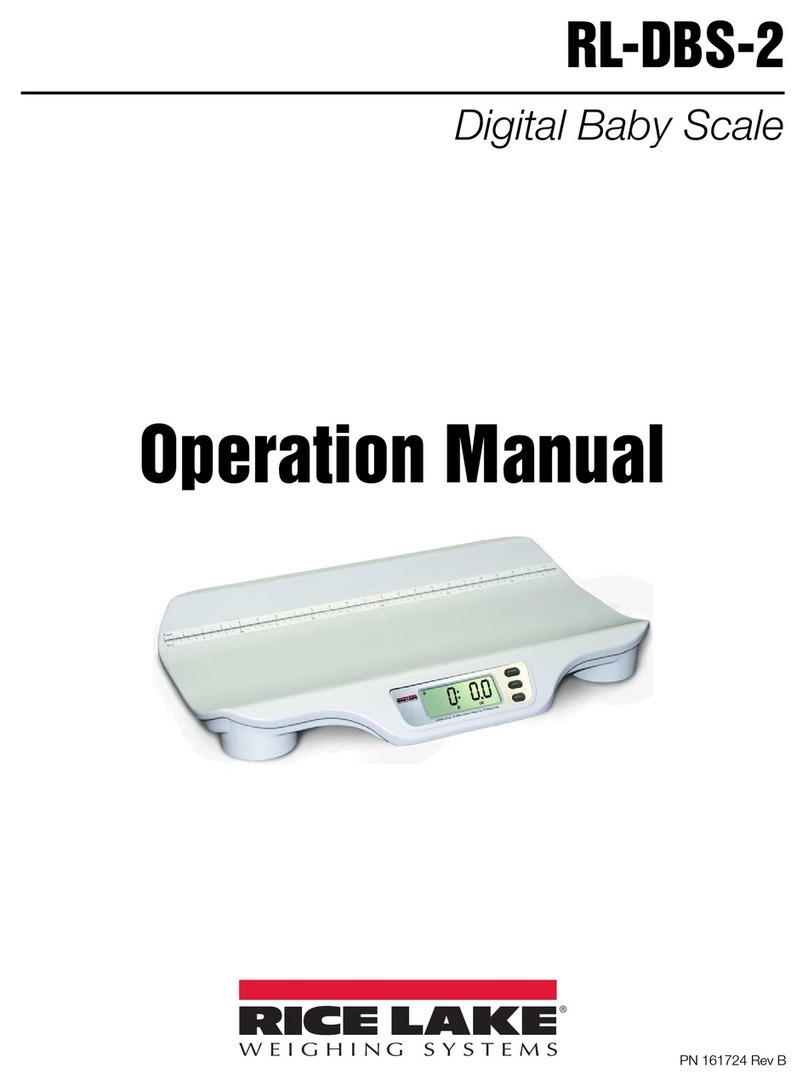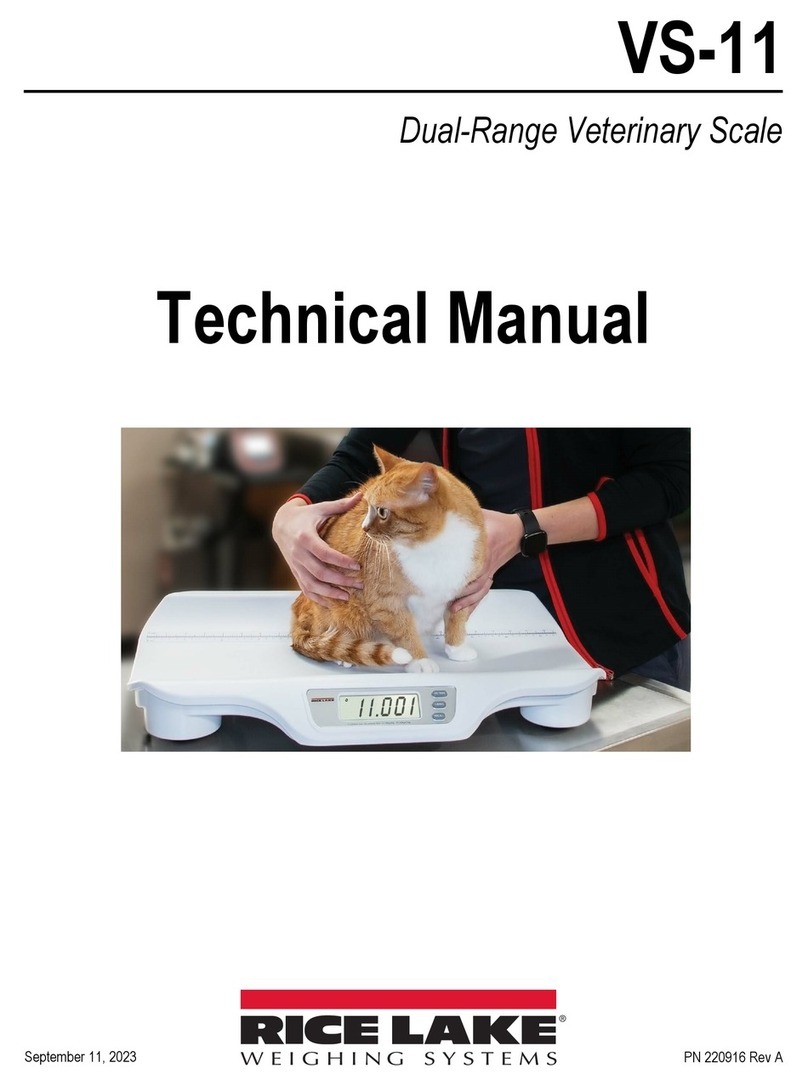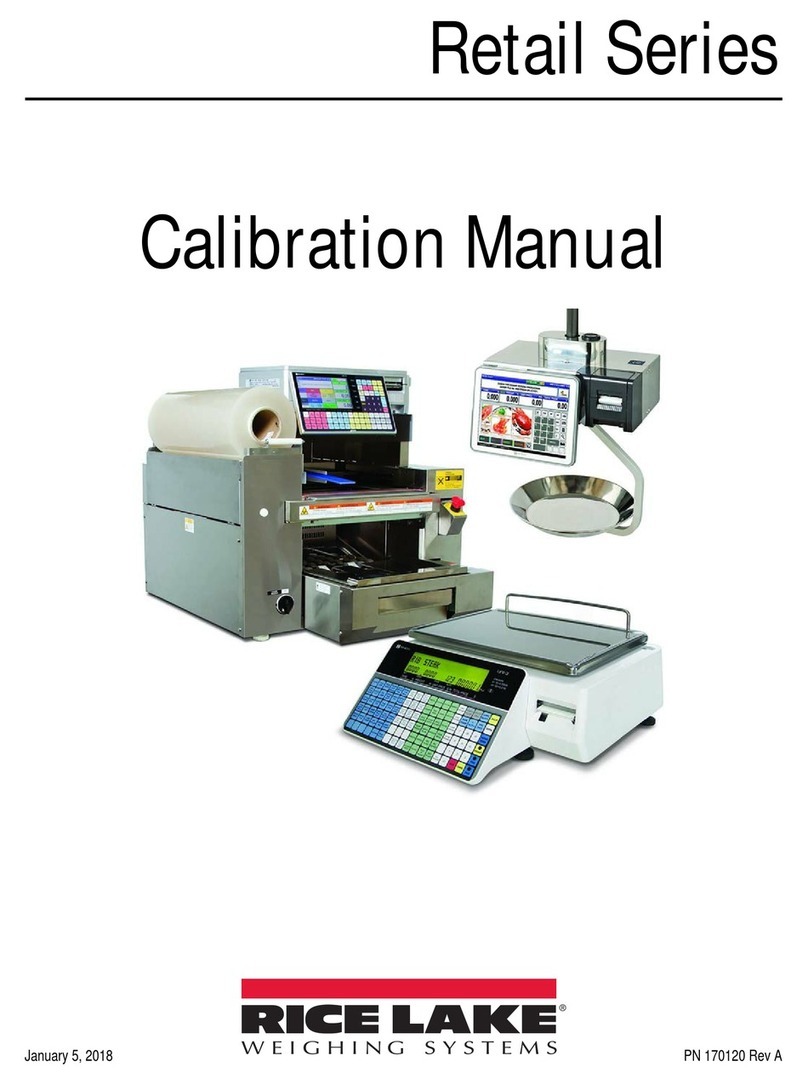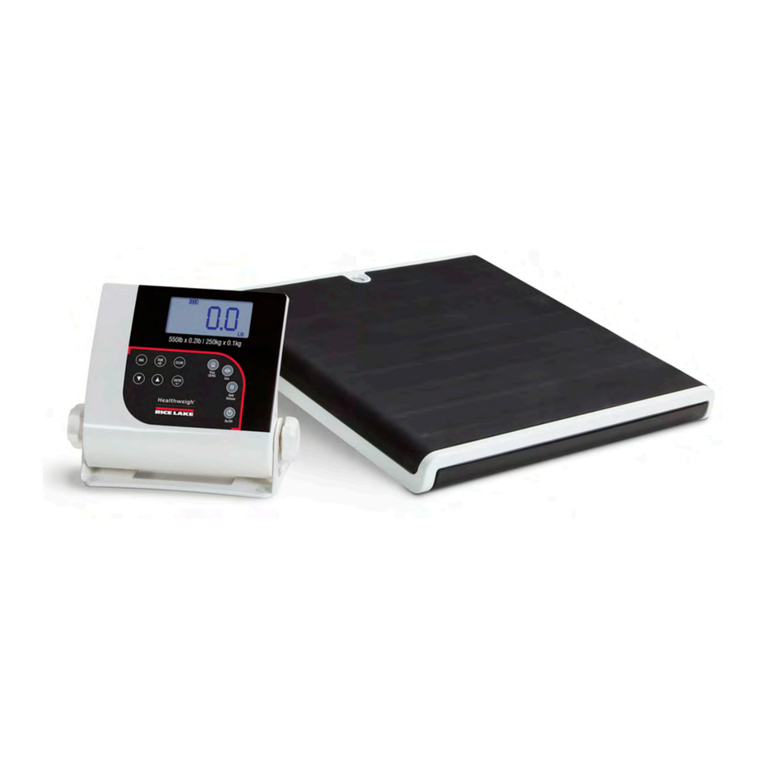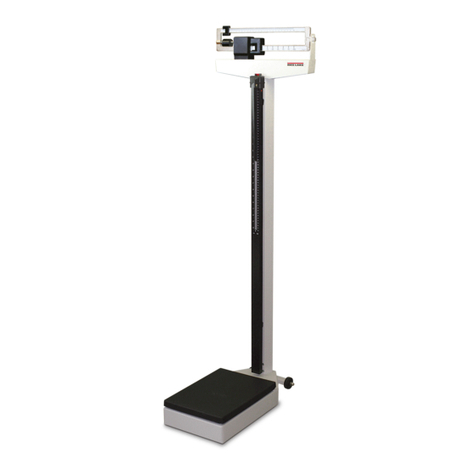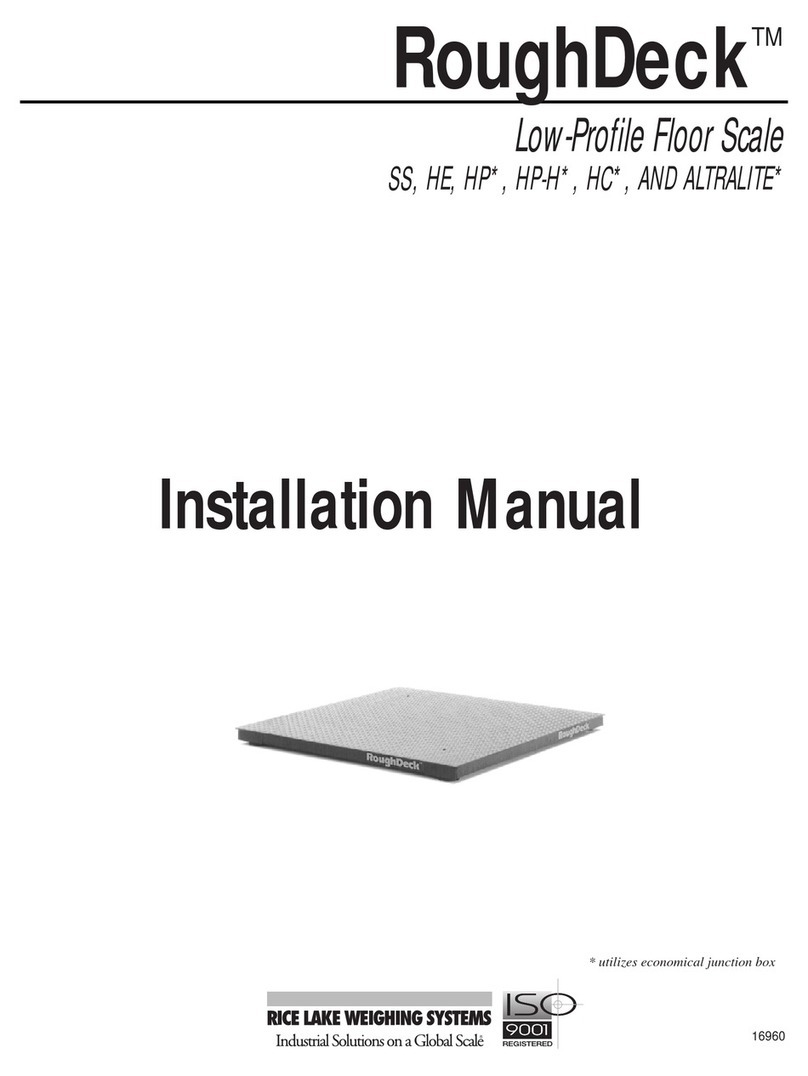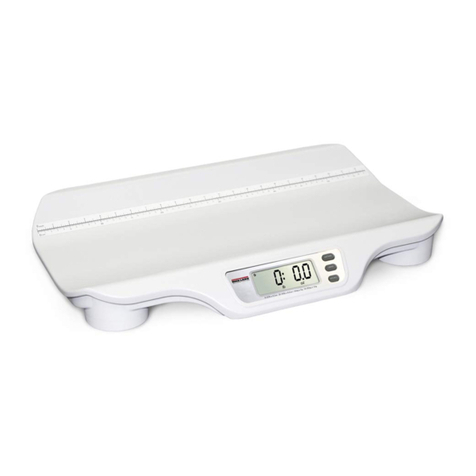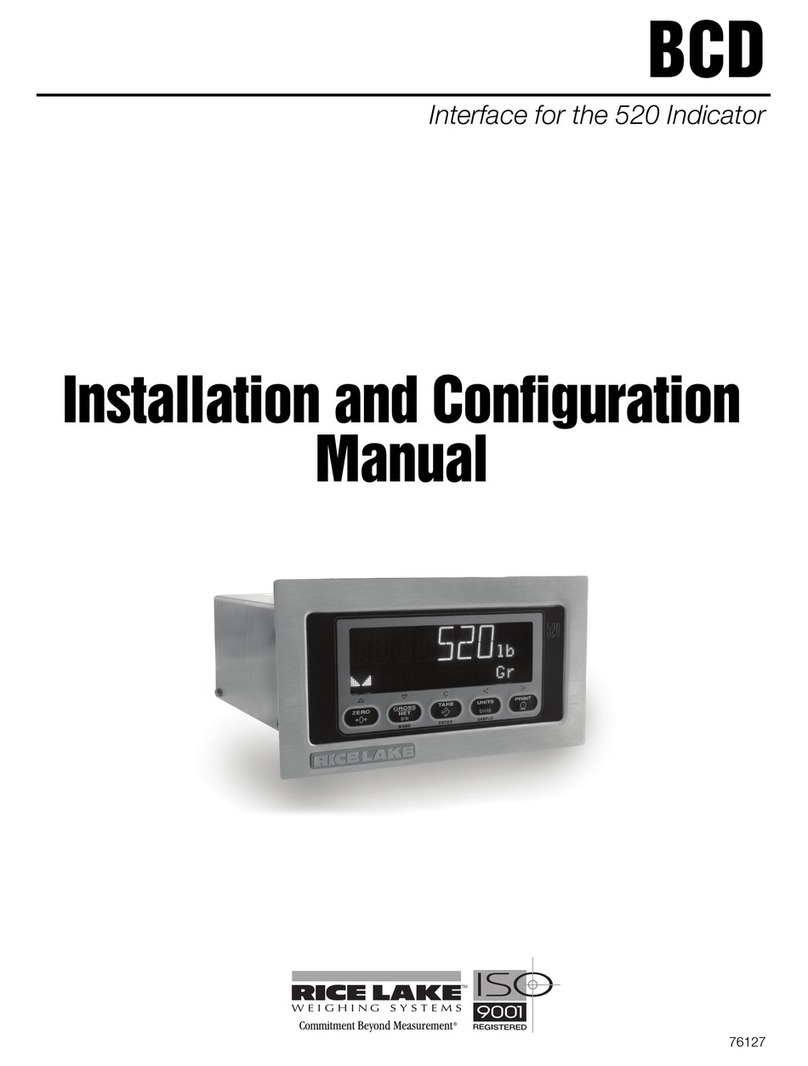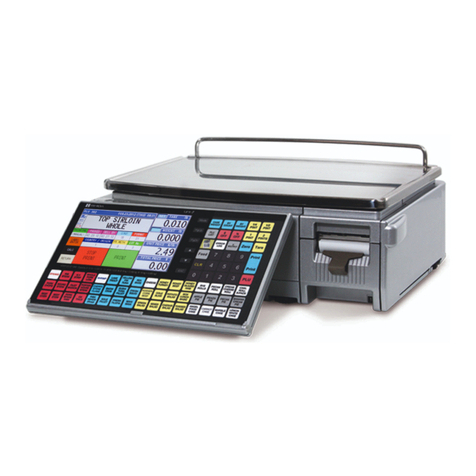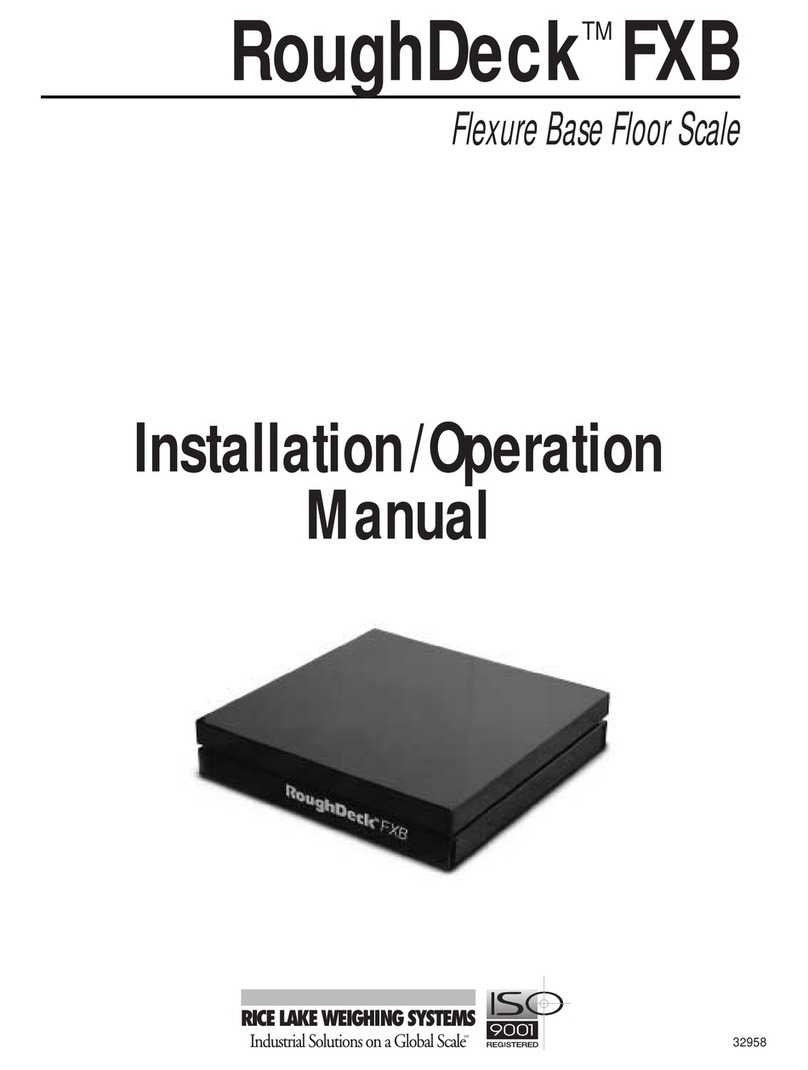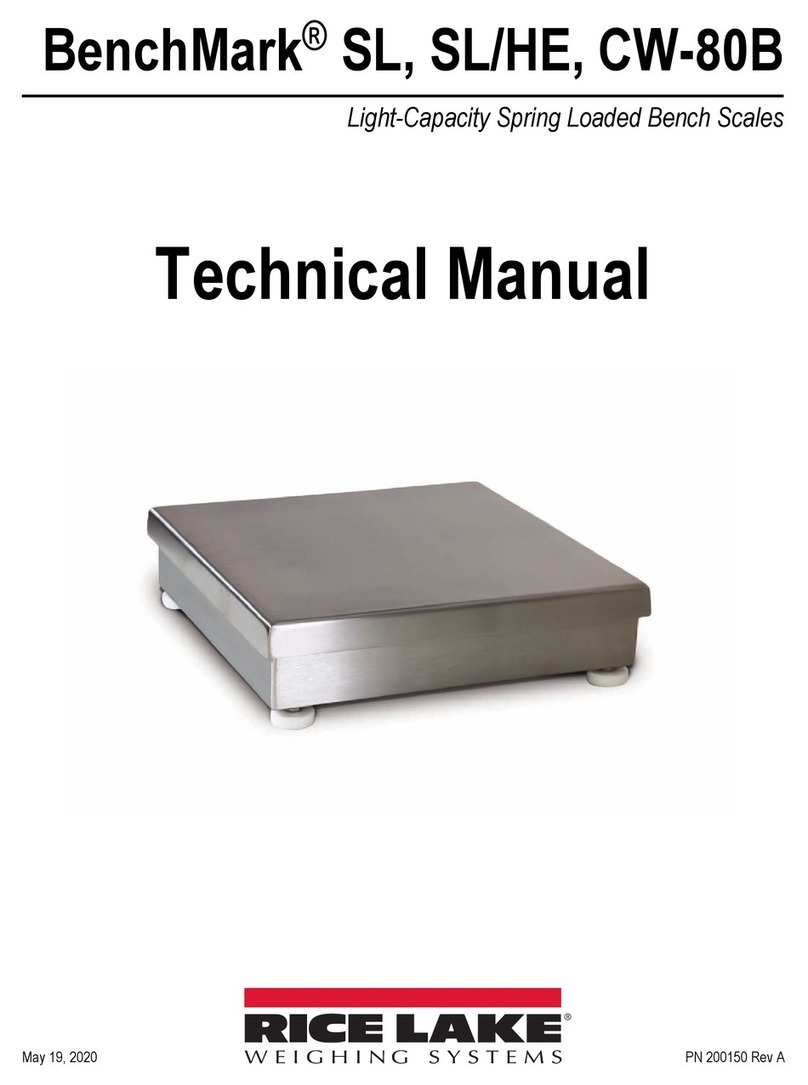
Copyright © 2001 Rice Lake Weighing Systems. All rights reserved. Printed in the United States of America.
Specifications subject to change without notice.
Version 6.2E, June 2001
Contents
About This Manual................................................................................................................................... 1
1.0 Introduction.................................................................................................................................. 1
1.1 Unpacking and Inspection.................................................................................................................. 1
1.2 Repacking.......................................................................................................................................... 1
1.3 Front Panel......................................................................................................................................... 2
1.4 Annunciators ...................................................................................................................................... 2
1.5 IQ9500 Keypad .................................................................................................................................. 3
2.0 Installation................................................................................................................................... 4
2.1 Locking and Unlocking....................................................................................................................... 4
2.2 Scale Resolution................................................................................................................................. 4
2.3 Capacities and Resolutions................................................................................................................. 5
2.4 Setting Up.......................................................................................................................................... 5
2.5 Powering Up the IQ9500.................................................................................................................... 6
2.6 Setting Time and Date........................................................................................................................ 7
2.7 Installing Cable Strain Relief................................................................................................................ 8
2.8 Pole Mounting Instructions ................................................................................................................. 8
2.9 Load Cell Replacement....................................................................................................................... 9
3.0 Operator Instructions................................................................................................................. 11
3.1 Entering Tare Weights....................................................................................................................... 11
3.2 Toggling Between Net and Gross Weight ......................................................................................... 11
3.3 Entering Unit Weights....................................................................................................................... 12
3.4 Part Accumulation and Reduction–Without Recalling an Item Code.................................................. 12
3.5 Toggle Between Scales.................................................................................................................... 13
4.0 Programming the Scale............................................................................................................. 14
4.1 Item Code Storage........................................................................................................................... 14
4.2 Item Code Maintenance.................................................................................................................... 15
4.3 Using Item Code in Normal Mode..................................................................................................... 16
4.4 Global Setpoint Programming– Setpoints Not Tied to an Item Code................................................. 17
5.0 Configuration/Dealer Settings ................................................................................................... 18
5.1 141 and 142 Settings....................................................................................................................... 18
6.0 Calibration.................................................................................................................................. 25
6.1 IQ9500 Display Resolution................................................................................................................ 25
7.0 IQ9500 Counting Scale Setup.................................................................................................... 27
7.1 Setting Up the IQ9500...................................................................................................................... 27
7.2 Scale Setup Options......................................................................................................................... 28
8.0 RS-232 Specification................................................................................................................. 32
8.1 RS-232 Ports ................................................................................................................................... 32
8.2 Eltron Printers................................................................................................................................... 32
8.3 Epson Tape Printers......................................................................................................................... 33
8.4 Epson Ticket Printers........................................................................................................................ 34
8.5 IQ9500-to-PC Output Data Format with Header............................................................................... 34
8.6 IQ9500-to-PC Output Data Format Without Header ......................................................................... 35
8.7 Data ................................................................................................................................................. 36
8.8 Status Data Byte .............................................................................................................................. 36
8.9 Bar Code Scanner............................................................................................................................ 37
